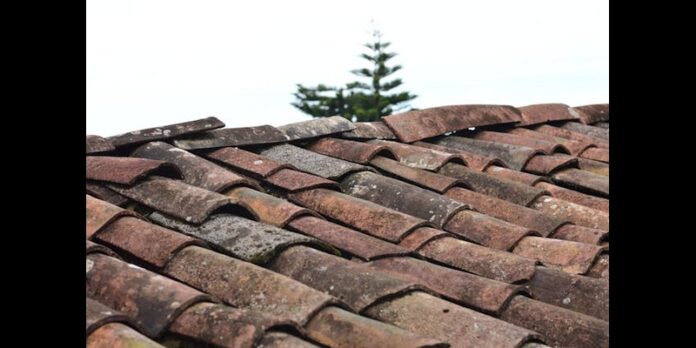Winter brings cold winds, heavy snow, and unfortunately, a higher risk of roof damage. One specific problem many homeowners don’t see coming is ice dams. It’s easy to assume your roof can handle whatever weather comes its way, but ice dams form quietly and can lead to serious, expensive problems before you even notice.
If you’ve spotted long icicles hanging from your roof or noticed water stains on your ceiling after a snowstorm, you might already be dealing with ice dams. Knowing what they are and how to handle them can save you time, stress, and costly repairs. This guide explains everything homeowners need to know—from how ice dams form to how professional help can make a difference.
Read more:
- How Insulated Conservatory Roof Panels Can Add Value to Your Home
- The Best Conservatory Roof Panels for Year-Round Comfort
- Choosing the Right Roofing Contractor for Your Home Improvement Project
- The Benefits of Converting Your Conservatory Roof
Understanding What Ice Dams Actually Are
An ice dam is a ridge of ice that forms along the edge of a roof, usually after snow has fallen. When heat escapes from inside your home, it warms the roof surface, causing the snow to melt. That melted snow runs down the roof until it reaches the colder edge, where it freezes again. Over time, the frozen water piles up and forms a dam.
The real trouble starts when water from melting snow gets trapped behind that ice ridge. Instead of running off the roof, it can seep under shingles and leak into your home. Many people mistake icicles for harmless winter decoration, but they often signal the start of bigger issues caused by ice dams.
Even with careful maintenance, ice dams can still form. When that happens, handling the problem yourself isn’t always safe or effective. If you see large ice ridges that won’t melt or notice serious leaks inside your home, it’s time to call for help. This is when experienced roofers should step in.
Roofers have the right tools and training to safely remove ice dams. They also know how to check for hidden damage that you might not see from the ground. Addressing the issue early stops small problems from turning into expensive repairs later.
Spotting the Early Signs Before Damage Gets Worse
Knowing what to look for helps catch ice dams early. The most obvious sign is a line of ice or icicles hanging off the gutters. While some icicles are normal, large, heavy ones that stretch across the roof edge usually mean there’s an ice dam forming behind them.
Inside the home, signs show up as water stains on walls or ceilings near the edge of the house. Paint may peel or bubble as moisture seeps in. In more advanced cases, you might even see warped flooring or notice a musty smell, which suggests hidden water damage. Ignoring these signs allows the problem to get worse and cost more to fix later.
Why Ice Dams Can Do More Than Surface-Level Harm
It’s easy to underestimate what a little ice buildup can do. But ice dams don’t just affect the roof surface. They can lead to damaged shingles, ripped-off gutters, soaked insulation, and even mold growth inside the home. When water sneaks past the roof’s protective layers, it can rot wood and weaken the roof structure over time.
Gutters especially take a hit. Ice puts a lot of weight on them, which can cause them to pull away from the house or break completely. Homeowners may also notice drafts and rising energy bills because of damaged insulation. Fixing this kind of damage can get expensive fast.
How Attic Insulation and Ventilation Keep Ice Dams Away
One of the best ways to stop ice dams is by improving attic insulation and ventilation. If your attic stays close to the same temperature as the outdoors, snow on the roof won’t melt unevenly. Proper insulation keeps warm air inside the house rather than letting it leak into the attic.
Ventilation is just as important. When air flows smoothly through the attic, it helps balance temperatures and reduce moisture buildup. This is why roofing professionals always check insulation and ventilation when inspecting roofs in winter-prone areas. Making sure both systems work properly protects your home not just from ice dams, but from other moisture-related problems too.
Simple Prevention Steps Homeowners Can Handle
While some solutions require professional help, there are steps you can take yourself to reduce the risk of ice dams. One of the easiest things to do is use a roof rake after heavy snowfall. This tool helps you clear snow from the lower part of the roof, keeping it from melting and refreezing into a dam.
Another simple task is cleaning out gutters. Clogged gutters trap water, which can freeze and create ice buildup along the edges. Keeping them clear of leaves and debris helps water flow off the roof smoothly. It’s also a good idea to keep an eye on your attic temperature. If it feels warm, adding insulation might help, but check with a roofing expert before making major changes.
The High Cost of Ignoring Ice Dam Issues
Some homeowners put off dealing with ice dams, hoping the problem will go away on its own. Unfortunately, ignoring ice buildup can lead to serious and costly damage. Small leaks can turn into major roof repairs. Damaged insulation can raise heating bills. Mold from trapped moisture can affect air quality inside your home.
Fixing these problems after they happen usually costs much more than taking steps to prevent them. Investing in a solid roofing system, regular maintenance, and occasional expert inspections saves money over the long run.
Ice dams may not seem like a big deal at first, but they can cause serious damage that’s both expensive and stressful. Knowing how they form, recognizing early signs, and understanding how to prevent them helps keep your home safe during the winter months.
If you’re unsure about your roof’s condition or need help with prevention, reach out to local roofing professionals. With the right support and the right roofing system, you can enjoy peace of mind through even the harshest Pittsburgh winters.

